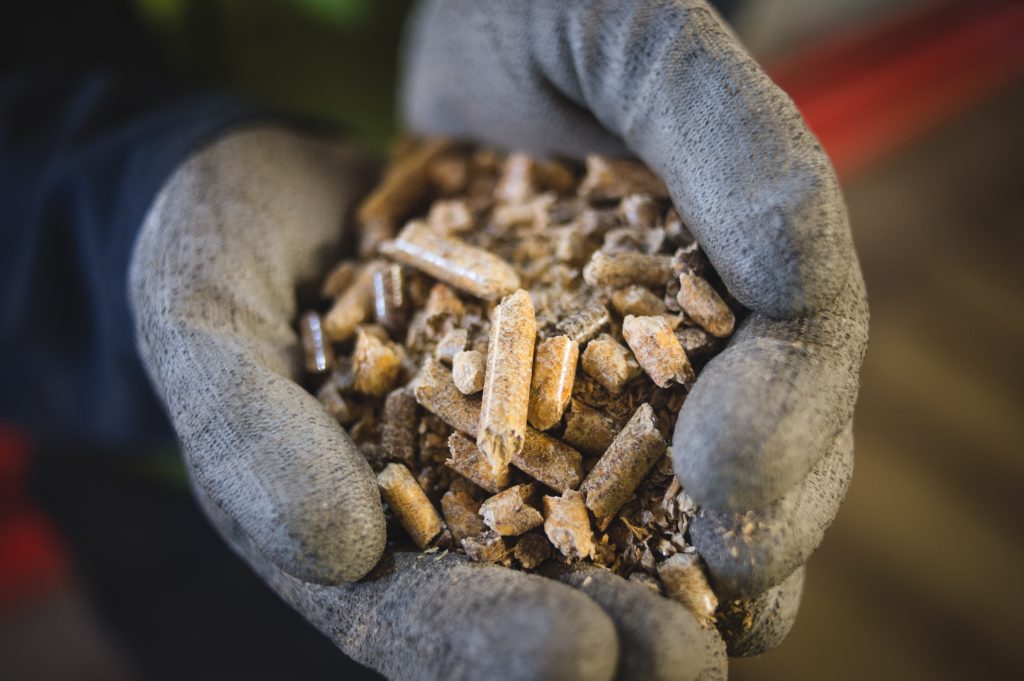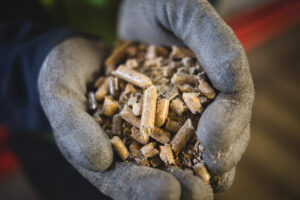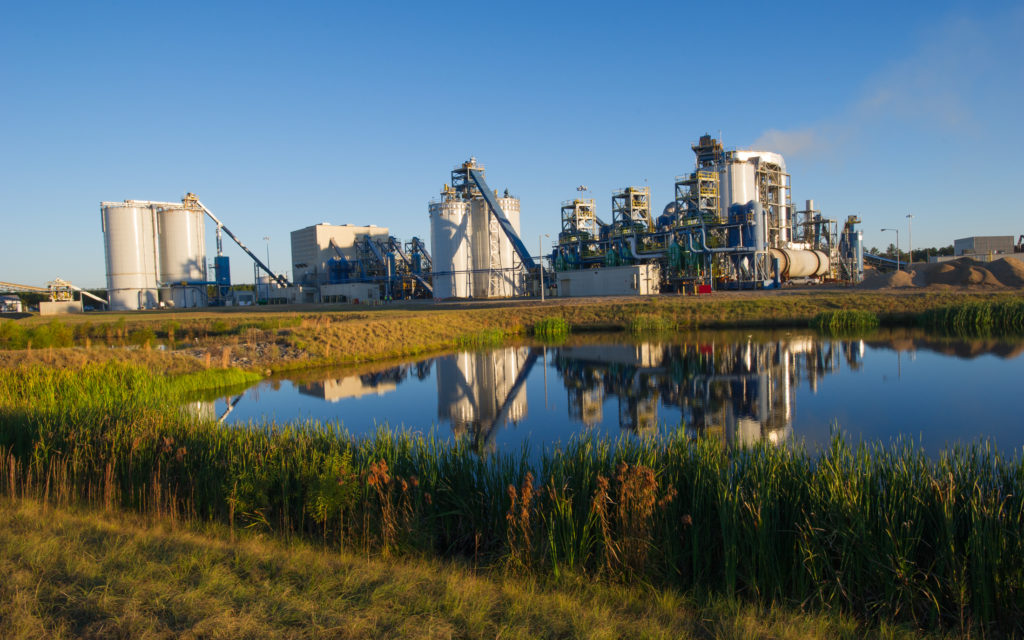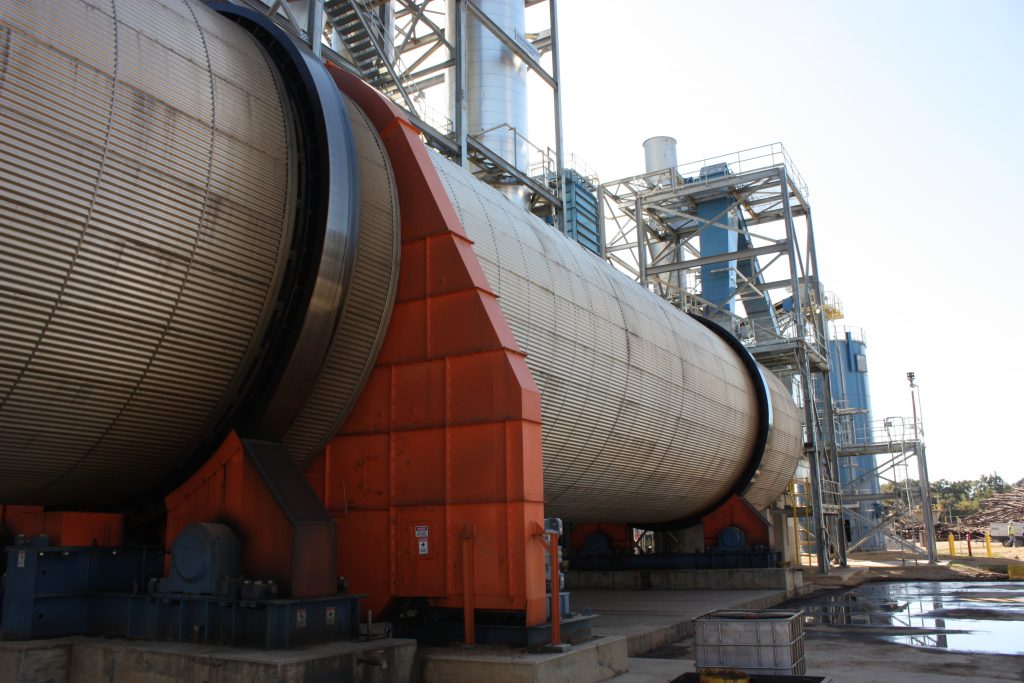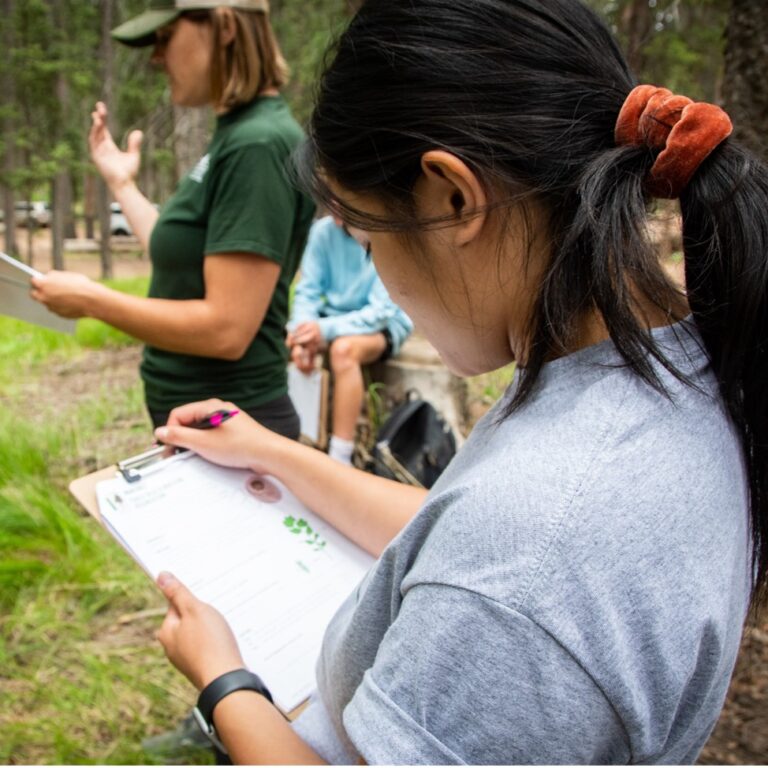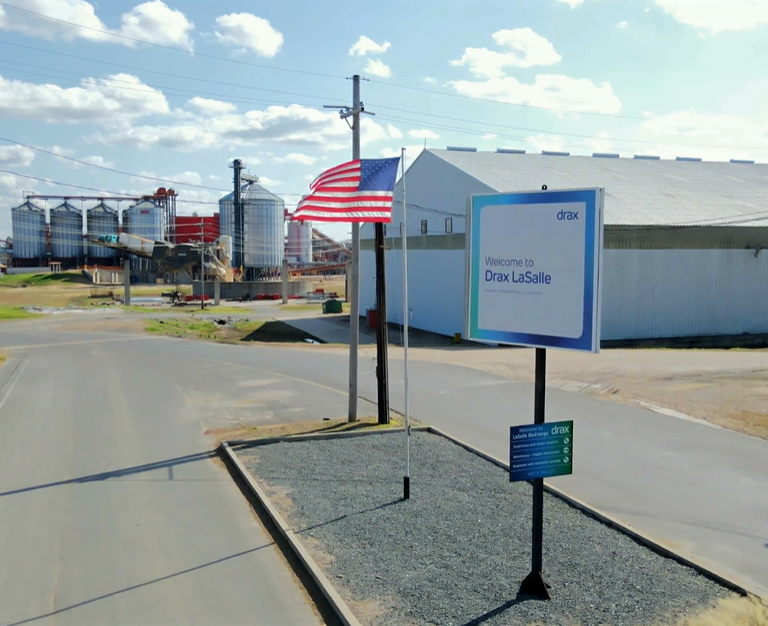Wood has been used as fuel for tens of thousands of years, but compressed wood pellets are different. Each is the size of a child’s crayon and weighs next to nothing. When produced in bulk, these pellets can be used by power stations to generate reliable, renewable electricity.
Wood pellets also have a positive economic impact on the communities in which they’re manufactured, as the pellet industry supports the many landowners and loggers whose livelihoods depend on a strong market for wood products.
At the Amite BioEnergy facility in Gloster, Mississippi, 450,000 metric tons of pellets are produced each year and shipped to the Drax Power Station in England to generate renewable electricity. This is the story of how those pellets are made.
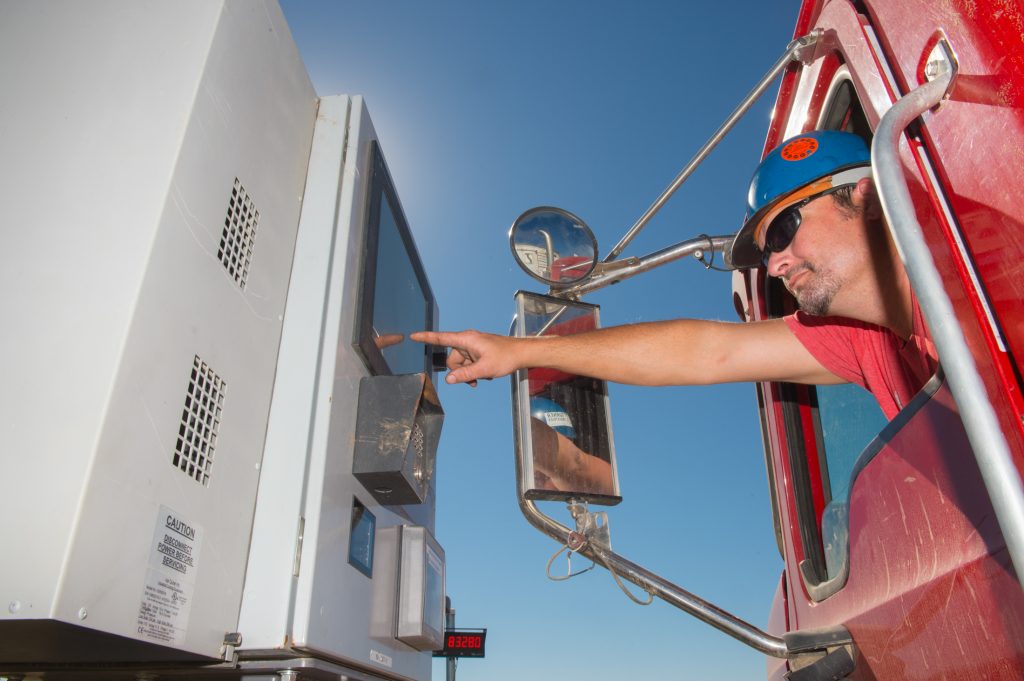
1. Wood fiber arrives
Trucks arrive at the plant carrying one of the following loads: low-grade roundwood such as thinnings and diseased or misshapen trees; wood chips produced from harvesting residuals, including branches and treetops; sawdust and similar by-products from other wood product manufacturing operations; or bark. The roundwood is delivered to the woodyard where it is staged for processing, while the wood chips and sawdust and delivered directly to the woodchip pile. Meanwhile, the bark is delivered to a separate area where it is stored for use as fuel for the woodchip dryer.
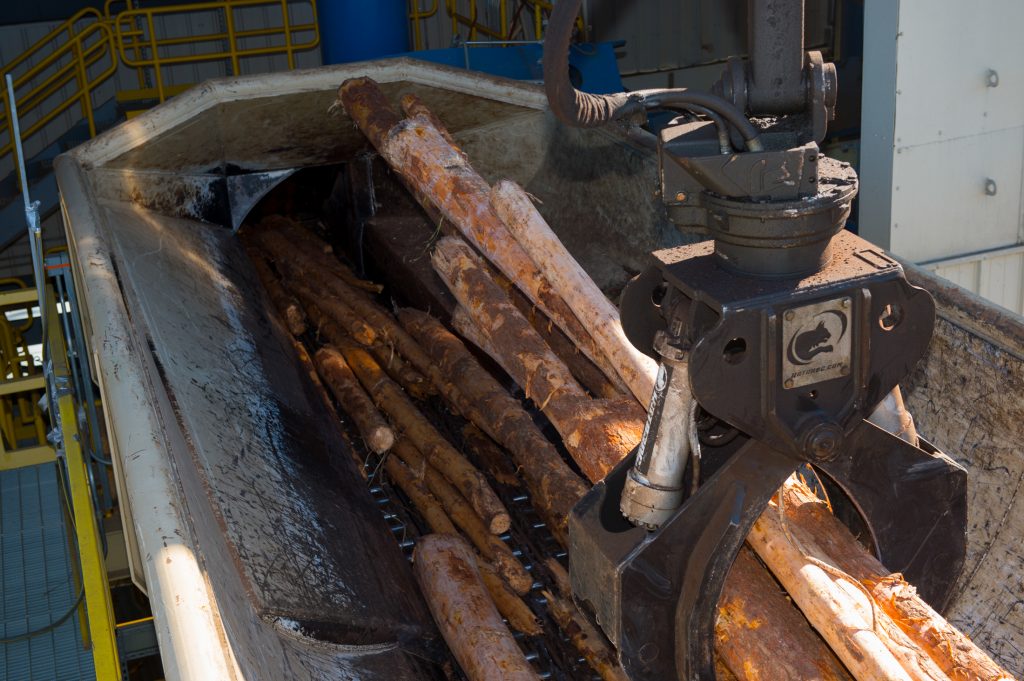
2. Bark is removed
The roundwood in the woodyard is fed into a rotating drum debarker, which tumbles the logs against one another to dislodge the bark. A conveyor belt redirects the bark to a storage area for use as a fuel, while the debarked logs are readied for chipping.
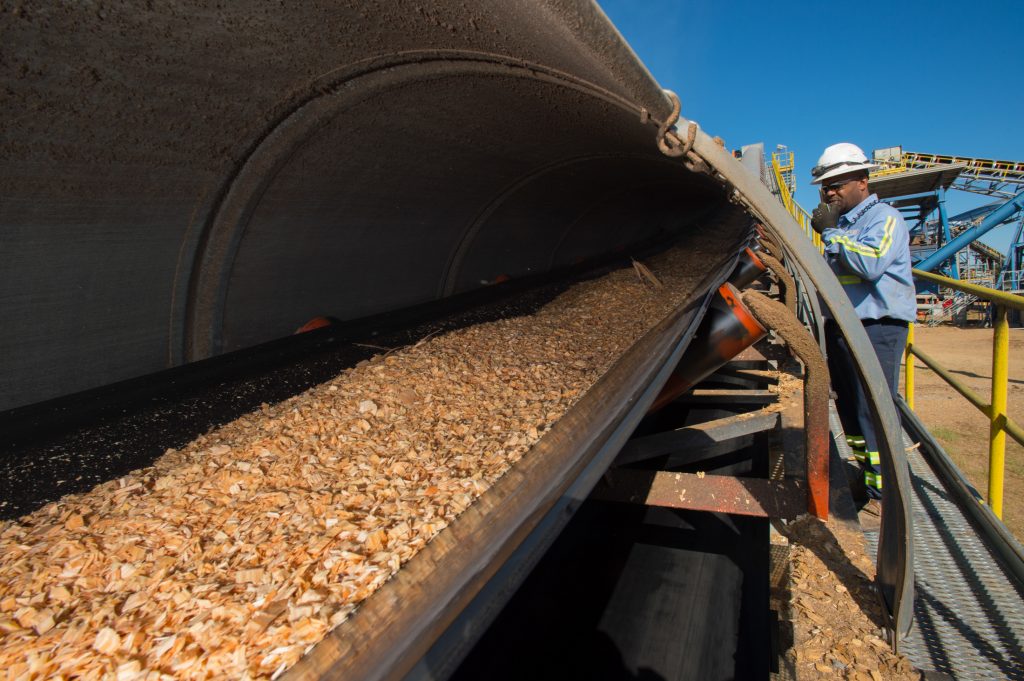
3. The wood is chipped
The debarked logs must be chipped into small, uniformly-sized pieces before they can used to create pellets. A wood chipper at the end of the drum debarker uses multiple spinning blades to cut the logs into chips roughly 10mm long and 3mm thick. The chips are then delivered on a conveyor belt to the woodchip pile, where they await the next step in the manufacturing process.
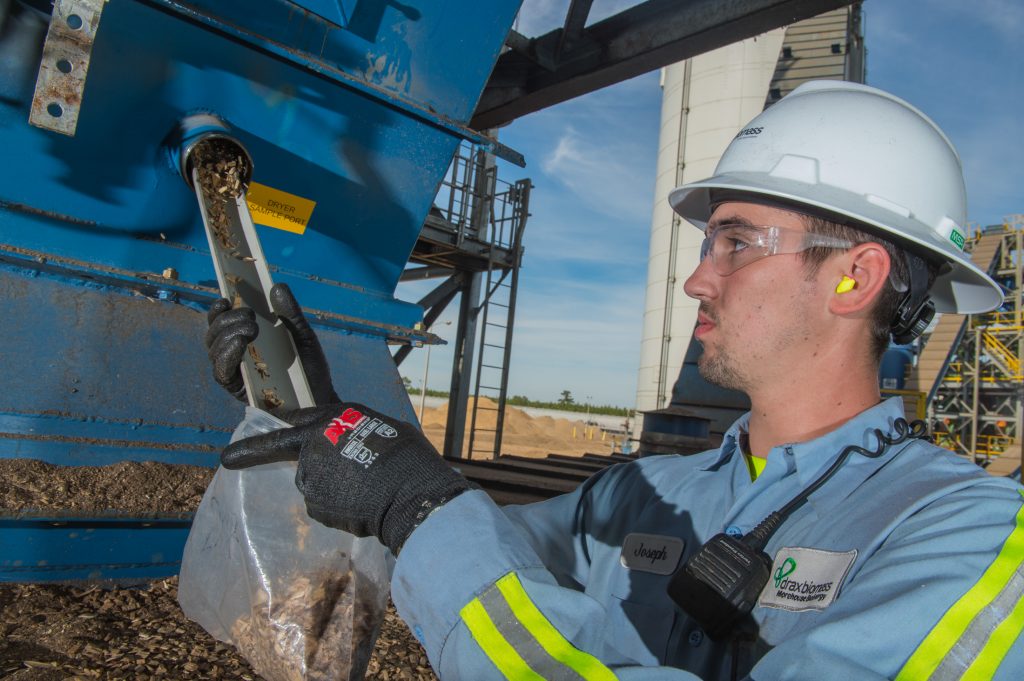
4. Wood chips are screened for quality
The wood chips sometimes include unwanted material like sand, bark or stones. To remove this waste, the chips pass through a screener to ensure only properly-sized chips reach the dryer.
5. Drying the wood chips
The chips enter an industrial dryer, where they are exposed to a stream of super-heated air produced by burning the bark from the drum debarker. The dryer reduces the moisture level in the wood chips from 50% down to roughly 12% – a critical step in ensuring the quality and energy content of the finished pellets.
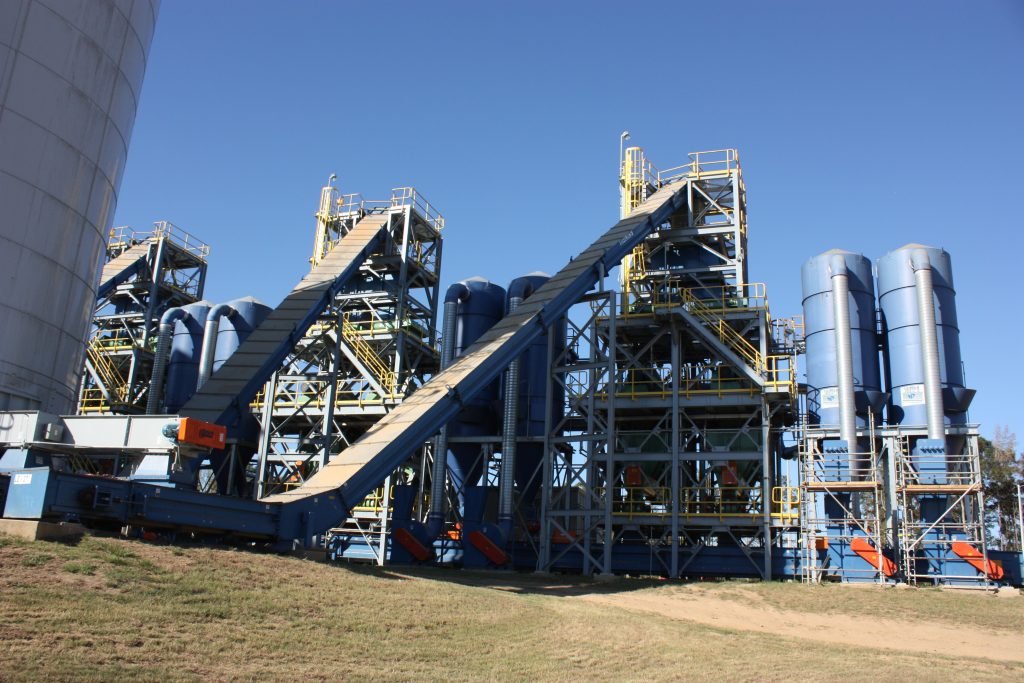
6. Dry wood chips are shredded into fiber
The dried chips are then fed into a series of hammer mills that contain spinning shafts mounted with hammers. The hammer mills shred the chips into a fine fiber, the last step before pelletizing.
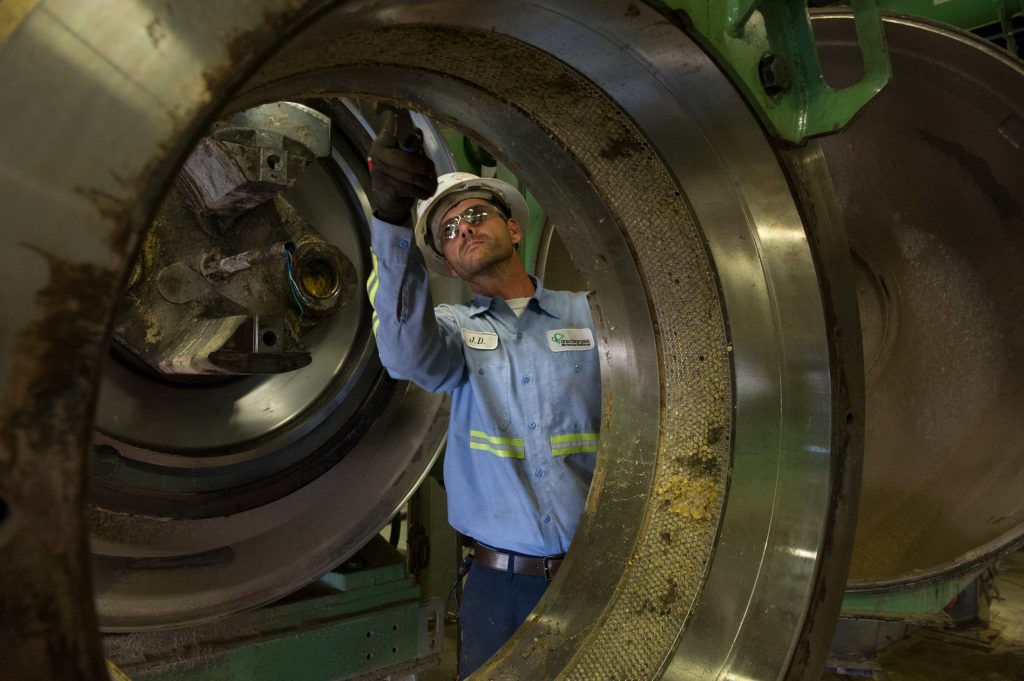
7. The pellets are formed under extreme pressure
The wood fiber is then fed into the pellet mill where a rotating arm forces the material through a metal die containing a number of uniform small holes. The intense pressure heats up the wood fiber and binds it together as it passes through the die. This process forms the compressed wood pellets.
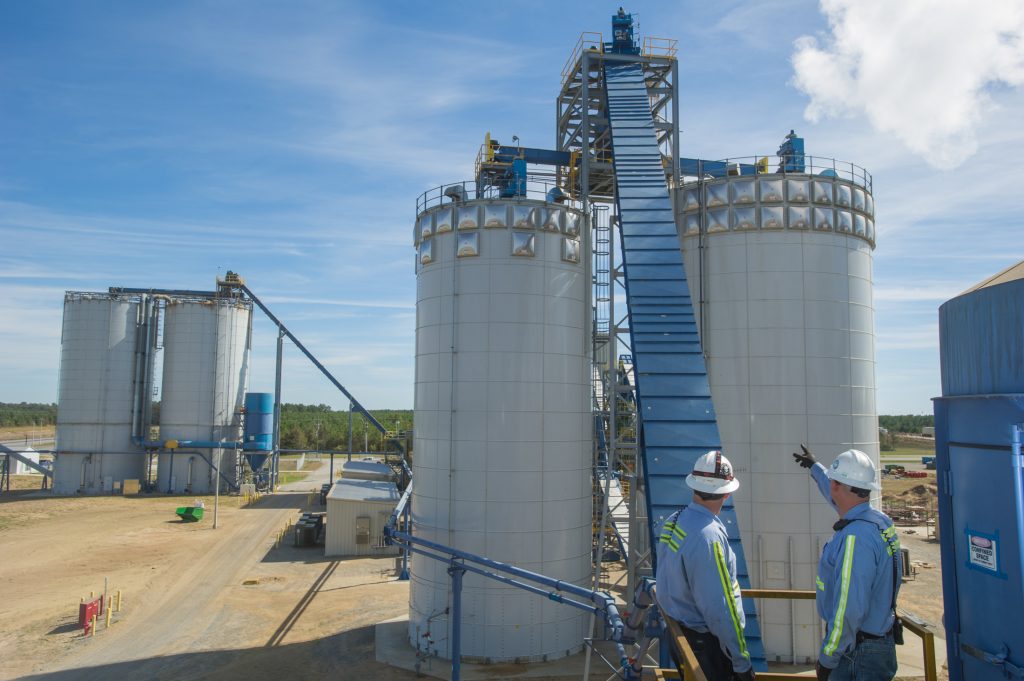
8. The pellets cool down
The newly formed pellets are then transported to large storage silos, where they can cool and harden while awaiting shipment to the port facility.
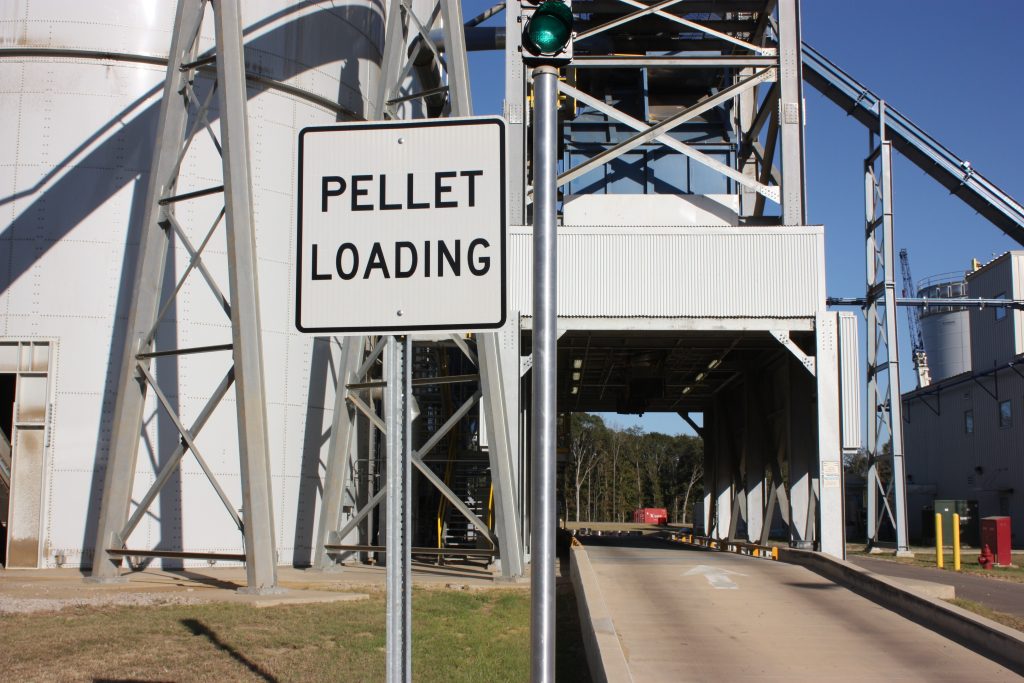
9. The journey begins
The pellets are finally loaded on trucks and driven to the Baton Rouge Transit Facility, where they’re stored in specially designed and constructed domes that can safely hold 40,000 metric tons. This is the final stop in the pellets’ journey before being shipped to the UK to be used at Drax Power Station.
